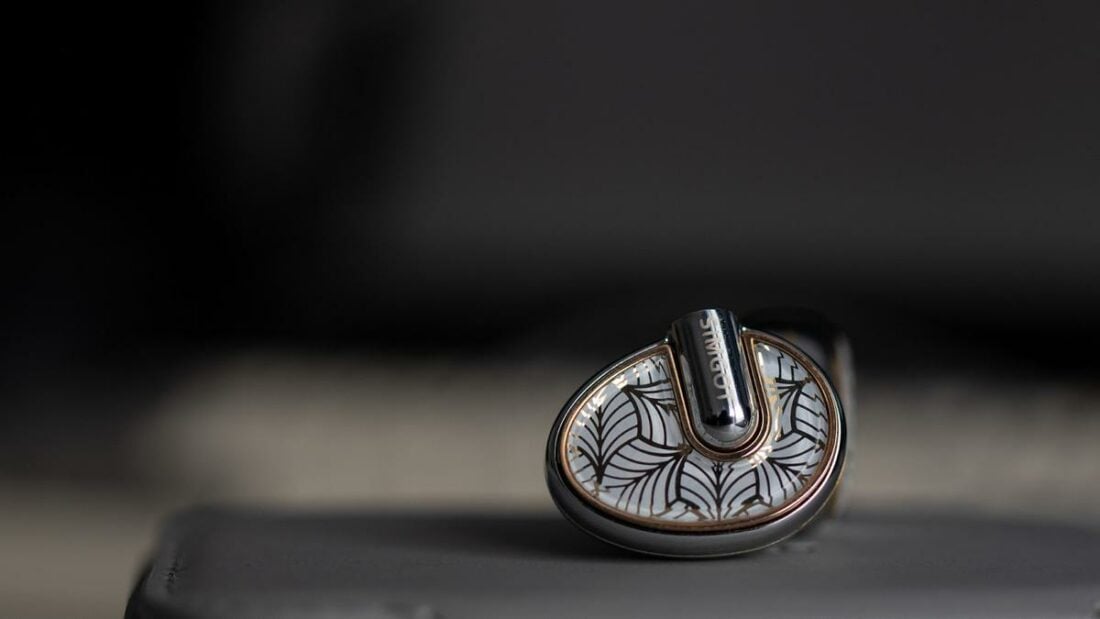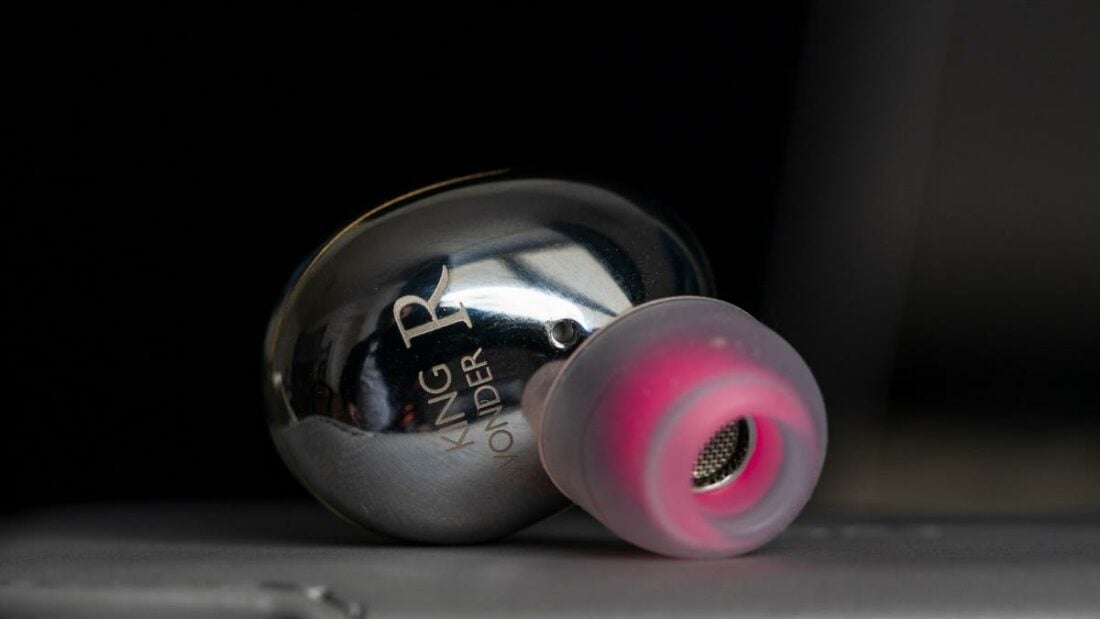Simgot returns to the market with the EN1000, and they get a lot of things right.
It’s been a while since Simgot released something new in their lineup. A couple of years ago, I auditioned the EN700, and they were competitive in their respective price bracket. Since then, there has only been silence on Simgot’s front.
- Exceptional build, unique design
- Comfortable fit despite the heavy shells
- Stock accessories are high quality
- Tuning plugs noticeably change treble response and staging
- Exciting, engaging tuning that works well for modern genres
- Good macrodynamic punch
- End-to-end extension
- Good separation for a single-DD
- Good staging and imaging
- Can sound fatiguing over the long run
- Swapping between tuning plugs is a clumsy affair
- Stock tips might not suit everyone
- Lower-mids could be more full-bodied
- Not the most natural timbre
It appears that in 2023 Simgot wants to change that trend and has come up with the EN1000, their mid-range single-dynamic driver offering.
However, their claim to fame is not the driver itself but rather the “tuning plug” system, where you swap out the 3.5mm termination to attain a different tuning.
Is this unique tuning module enough to make the EN1000 amidst a sea of competitors? Let’s find out.
Technical Specifications
- Form: IEM
- Drivers: 1 x 10mm DLC and Beryllium-plated dome dynamic driver
- Impedance (Ohm): 32 ohms
- Sensitivity (dB): 108 dB/mW
- Frequency Response (Hz): 20 Hz – 40 kHz
- Total Harmonic Distortion (THD): <1%
- Removable Cable: Y
- Source Jack: 3.5mm
- Cup/Shell Jack: 0.78mm
Packaging
Simgot has named the EN1000 “King Wonder”, and that nickname is fairly prominent on the box. The box has a good amount of padding inside to protect the IEMs during transit.

In the box
- Simgot EN1000 IEMs
- 6 pairs of silicone tips
- 2 extra tuning modules
- Carrying case
- 8-core SPC cable with 2-pin connectors and 3.5mm plug
The accessories are of good quality in general. The carrying pouch is made out of PU leather and offers minimal protection. It is adequate for storing the IEMs with the cable alongside the extra tuning plugs.

The stock cable is excellent and one of the best you can find at this price point.
The sheathing is supple and doesn’t form kinks at all. The memory wire is also not aggressively bent and easy to manipulate. As a plus – the cable looks great due to the shimmery silver-plated copper strands, and the chrome-plated accents further the sense of luxury.

The stock tips are decent but I ended up using Azla SednaEarFit Vivid edition due to slightly better comfort and sound.
Design
Simgot EN1000 are absolute stunners.
Build quality is exceptional. The shell is a three-part design: the front is aluminum, the mid-frame is stainless steel, and the back is tempered glass with a shiny, decorative pattern underneath.
The gold accent around the highly-polished silver surface exudes elegance and has the classic “Simgot” design.

There are two vents: one near the nozzle, and another close to the 2-pin connectors.

The 2-pin connectors sit flush with the housing. Despite that, the stock cable fits well. Please note that aftermarket cables with qdc connectors will not work with such flush 2-pin ports.

All in all, excellent build quality and is probably the best you can find under the USD$150-$200 price range. The glass back adds a touch of class that also makes the EN1000 stand out amidst the rest.
Comfort and isolation
Comfort is excellent despite the dense shells.
Once worn, the EN1000 fit snugly and do not cause any discomfort.
Noise isolation is just average due to the extra venting on the shells. On the positive side, pressure buildup within the ear canals while wearing the IEMs is reduced this way.
Internals
Simgot EN1000 utlize a single, 10mm dynamic driver with DLC and beryllium plated diaphragm.
Such composite coatings usually end up stiffening the diaphragm further, which needs a more flexible suspension system to have ideal “pistonic motion”. Simgot has taken care of that as well.
The voice coil is copper-clad aluminum wire, and the entire driver sits within a dual-cavity chamber for better damping.
Simgot EN1000 Sound
The Simgot EN1000 have a bright V-shaped sound, in general. No matter which tuning plug you use, this treble emphasis persists; it only varies in quantity.
Tuning plugs
The tuning plugs are the unique selling point of the EN1000.
Basically, you can detach the 3.5mm plug, replace it with one of the supplied plugs, and the treble region will noticeably change in tuning.
To remove the module, you have to unscrew the headphone jack cover, and then pull apart the plug. There are four push-pins on the wire side, and the “breakaway” termination side holds the crossover circuit.

The entire mechanism is held by friction, and it is rather difficult to swap out once pushed in tightly. So I’d recommend not forcing the snuggest fit if you are after frequent swaps.

The annoying part is the wire section you must hold while tugging at the termination. It’s too slippery and does not offer any grip, making the process harder than it should be. I hope Simgot adds some texture there in the next release or with an updated wire.
The black plug (stock plug) has the highest amount of treble, especially the upper-treble. It sounds the most exciting, and the added air expands the stage. I like this one in short sessions since the extra treble tends to get fatiguing after a while for me.
The blue plug is slightly less emphasized in upper-treble, and consequently sounds less “sharp” in that region. It is a good middle-ground between the black and the red plug and I use it the most.
The red plug probably has the “best looking” graph, as the lower-treble is smoothed out and upper-treble is inoffensive. I find it very suitable for laid-back listening.
Unfortunately, the red plug makes the 5kHz peak somewhat pronounced as there is not much upper-treble to counter-balance, which leads to consonants and “s”/”t” sounds being over-emphasized. Stage is also more intimate with this plug.
All three plugs exhibit some metallic sheen in the treble region, which can be tamed by changing tips (e.g. Final E-type).

Bass
The bass has fast attack, natural decay, and the sub-bass rumble is noticeable. The mid-bass punch also adds some body and physicality to the lower region.
Bass has good texture, as can be noted on American Football’s Never Meant. It does not bleed much into the lower-mids as well. All in all, very good bass performance and definitely one of the highlights of these IEMs.
Midrange
Lower-mids do not sound lean or thin, but there is a noticeable recession. The upper-mids and mid-treble tend to steal the spotlight. As a result, high-pitched female vocals can veer into “shout” territory.
This shoutiness was most noticeable for me in tracks with very forward vocals. Otherwise, I do not notice it that much, especially in tracks with emphasized bass-line. Your mileage may vary.
Strings have a sharp leading edge with all three plugs, as heard on Damien Rice’s Cannonball. There is some artificiality here as the notes sound “too sharp” at times. This is more of a coloration of the sound than something offensive, and I enjoy such rendition of strings from time to time.
Treble
The lower-treble has a noticeable emphasis near 5kHz.
On the black and blue plugs, the upper-treble is also boosted, resulting in an airy presentation. However, the lower-treble peak sometimes makes snare hits sound too sharp, resulting in a noticeable metallic sheen to the treble timbre.
The lower-treble emphasis can also get fatiguing on tracks such Lamb of God’s Ruin, where the heavy snare hits get tiring after a while.
The resolved detail is very competitive for a single DD in this price range, thanks to this treble emphasis and a capable driver.

Soundstage and imaging
The staging is fairly wide and tall, with the recessed midrange being responsible for that to a degree. Imaging is also good, though center-imaging suffers due to the midrange recession.
Imaging is mostly left and right, with ordinal placements of instruments being a bit fuzzy.
Dynamics and speed
The EN1000 have good bass slam, and due to the good end-to-end extension, the macrodynamic punch has the sense of immediacy one might expect. Sudden bass drops have substantial physicality to them, which is getting rare these days in IEMs.
Microdynamics are best rendered with the black plug, as the extra airiness makes subtle shifts in volume more pronounced.
Comparisons
Vs Sennheiser IE 200
The Sennheiser IE 200 retail for a similar price to the EN1000 and also sport a single 7mm dynamic driver.
In terms of build, the Simgot EN1000 feel more premium and substantial in hand. Comfort, on the other hand, is far superior on the IE 200, with the IEMs almost disappearing while worn. Isolation, too, is a strength of the Sennheiser IEMs.
Both IEMs offer a degree of tunability. IE 200 depends on the positioning of the stock tips (which cover a bass vent if pushed fully downwards) to tune the bass and the upper-mids. The EN1000, meanwhile, rely on the tuning plugs and focus solely on treble tuning.

In terms of sound, these IEMs venture in opposite directions. The Simgot EN1000 are decidedly V-shaped in tuning, with a noticeable tilt towards mid-treble. The IE 200 counter with an airier, more even upper-treble response.
The lower-treble tuning on the IE 200 is more conducive to long-term listening, and the upper-treble is more restrained on the EN1000. Treble timbre is better on the IE 200.
The soundstage is wider on the EN1000 and the imaging is more precise. Mids are the bread and butter of the IE 200, with better timbre, a fuller-sounding lower-midrange, and a complete lack of shout.
Overall, I like the EN1000 for modern pop or rock genres since they tend to sound more engaging with compressed tracks. IE 200, meanwhile, sound exceedingly natural no matter what you throw at them, and the different tuning profiles are added cherries on top.
Where to Buy
Conclusion
Simgot broke their silence with the EN1000 and they are a capable re-introduction. The build is stellar, the design is unique, and the tuning plugs offer something different in a saturated market.
The big issue is the sheer amount of competition they have to contend with. This is where tuning choices make or break the deal for buyers. The bass and treble-boosted tuning is often frowned upon by audiophiles, but Simgot managed to strike a balance without going overboard.
The EN1000 are not perfect, as the recession in the mids and somewhat metallic-sounding treble hold them back. Then again, Simgot gets a lot of things right here, enough to make the EN1000 a compelling package for those who like V-shaped tuning and want some added treble emphasis.
